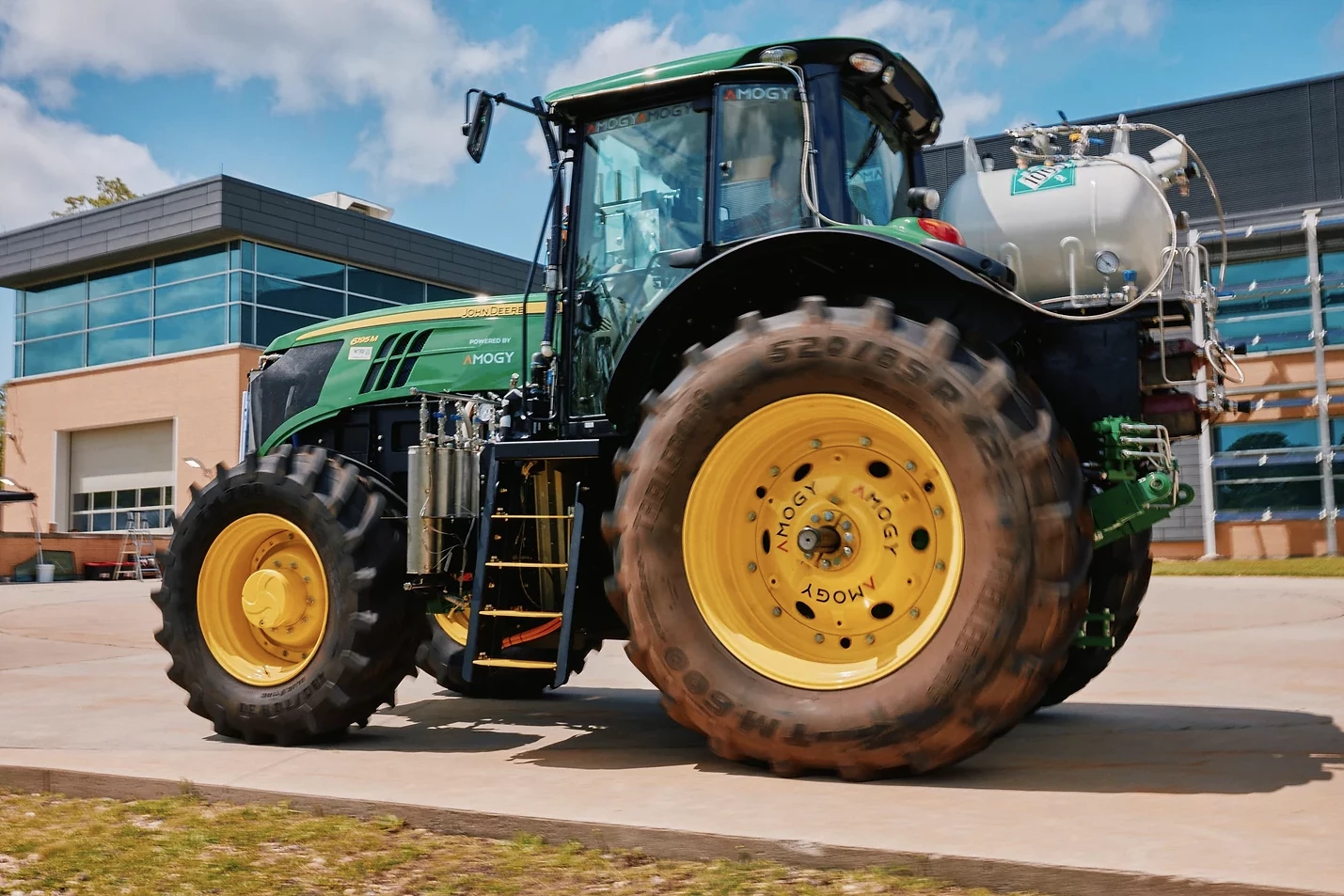Interest is growing in alternative fuel sources for tractors that help sidestep heavy diesel pollution, and given its widespread use as agricultural fertilizer, ammonia might just be a prime candidate. Brooklyn-based startup Amogy has broken important new ground in this area, fitting its zero-emissions energy system to a John Deere tractor to make the first ever tracks as an ammonia-powered heavy duty vehicle.
We've seen a number of interesting vehicle concepts aimed at cutting into the pollution created by tractors. This includes a number of electric options, some of which claim to be the smartest tractors in the room, and even ones powered by methane claimed to emit 80 percent less CO2.
Ammonia as a fuel source has started to show promise across a few modes of transportation, including shipping and aviation. Important questions remain over the most effective way to draw energy from ammonia, and how we can clean up the energy-intensive processes involved in its production, but Amogy believes its technology is poised to tap into its vast potential.
Its energy system consists of a tank to store ammonia in liquid form, which is fed into "highly-efficient" cracking modules that split it into nitrogen and hydrogen. The resulting hydrogen is what runs the system's fuel cell, which Amogy says can provide ongoing power for several hours at a time. The company says its solution offers five times the system-level energy density of a lithium-ion battery, at more than 700 Wh/kg.
This energy system was integrated into an otherwise-standard John Deere tractor with the ability to carry out regular farming tasks, but without the usual emissions. Amogy says the tractor was taken on several excursions with refueling in between, which it notes is as fast and simple as gas refueling of a conventional vehicle.

“We’re thrilled to be demonstrating our zero-emission ammonia power solution in action in a tractor for the first time ever," said Amogy CEO Seonghoon Woo. "Ammonia is a viable zero-emission fuel for all heavy-duty vehicles, but especially farming and agriculture, where the readily available chemical has been used as a fertilizer for decades.”
The company says technological improvements over the past year have seen a 20-fold increase in the power capacity of its ammonia-based energy system. It sees this tractor demonstration as an important first step in its efforts to decarbonize other heavy-duty transportation such as trucking and shipping, with further demonstrations planned in the coming year.
“As we continue our work to lead innovations in ammonia-based fuel solutions, the Amogy team believes this demonstration and future ones, including Class 8 trucks and shipping vessels to be demonstrated in the next 12 months, will accelerate the adoption of ammonia as the next generation fuel to replace polluting diesel engines with an emission-free solution among transportation industry sectors and investment partners," said Woo.
Source: Amogy




